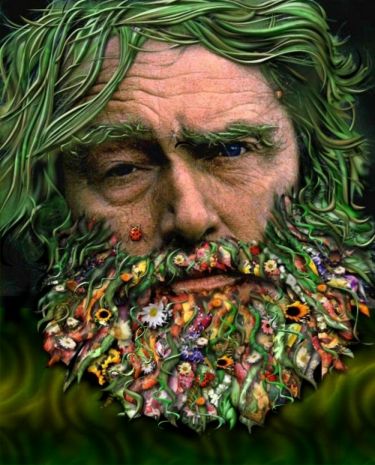 Five Glaring, Frequently Encountered Indoor Gardening Mistakes
Five Glaring, Frequently Encountered Indoor Gardening Mistakes
Growing plants indoors doesn’t demand a level of expertise on par with Indiana Jones, but it does require attention to some gardening basics with a few tweaks. Mistakes that may self-correct to some degree in an outdoor garden, like over-fertilizing and over-watering, are advantages lost when turning to growing plants indoors and in containers. The following five examples are arguably the most common mistakes fledgeling indoor gardeners are guilty of.
I. Inadequate Lighting
Indoor gardening is not synonymous with absence of light. It’s common to find a large pot arranged with a flowering shrub in its center, such as a hibiscus, and and a peripheral dressing of one or two bedding plants like alyssum and pansy—both are popular annuals—juxtaposed. All three specimens are types that thrive with full sunlight exposure and are generally found available most of the year in nurseries in the American southwest. There’s a reason hotels line the planters by the main entrance with ficus trees, hibiscus shrubs, petunias and snapdragons–shrubs like gardenias and vines like white jasmine are more delicate and usually placed under the eaves and to the right and left of the doors. Another mistake is finding a pot with a shrub-and-bedder full-sun combination in a narrow shaded atrium or next to a window that receives several hours of sunlight via northern exposure, or the north side of the home. While the atrium itself is not the worst environment, aeration tends to be diminished and direct sunlight is minimal. Blooms may not be as plentiful.
Also, summers by the California coast and several hours inland, towards the Mojave Desert, can be likened to the difference between Earth and Venus. Temperatures in California southwest deserts easily soar into the triple digits, and can turn an atrium into a low-blast furnace. If a covered patio is the setting, eastern or southern morning sunlight exposure is sufficient for many specimens and most bedders. Western exposure in winters is beneficial, but becomes prolonged and excessive in summers; hardier shrubs and annuals, like petunias, should be used. Closer to the coast and in northern regions that don’t freeze over, the choice of which-plants-go-where tends to be less practical and more aesthetic.
II. Inadequate Drainage
The next most-frequently encountered snafu is inadequate drainage, the cohort of overwatering. In an outdoor growing ground, this problem occurs when a stuck valve, broken pipe or errant hose leak causes water to pool. Improperly tilled ground, where softer, prepared soil borders areas where earth is denser, can lead to improper drainage because water has nowhere to go. Soil packed too firmly in containers will produce the same saturation levels. Constant saturation hinders or prevents seeds, sprigs or small specimens from sprouting and growing. Soil is porous, yes, but porosity is one of gardening’s most inconsistent aspects—hence, the existence of loam and clay and everything in-between. Saucers used in tandem with floor containers to prevent staining should be drained regularly. Large, heavy pots can dissuade such a chore, and some varieties are designed with grooves for water to escape. Another low-cost or no-cost trick to enable proper drainage in medium-sized and larger pots and troughs is to lay a bottom layer of broken ceramic shards or small pebbles. Doing so will prevent soil from compacting too densely in postwatering.
III. Incorrect Plant Soil Types
It happens everywhere, with unintentionally funny results: the novice gardener stops by the local nursery or home improvement warehouse, asks for potting soil and gets pointed towards pallets of various soils for home and commercial use. The cashier rings up the customer, with the assumption he or she found what they came for. Instead of a pH-specific mix for acidic plants or succulents, or a general potting soil for bedders and vegetables, generic mulch is dumped into a pot. The aspiring gardener is greener than they ought to be, and not in a good sense. Their inexperience is linked to the inevitable demise of tender young plants and immature shrubs for which the employed soil type is toxic.
It’s rather simple: the stronger planting soil is, the more it stinks. Genuine potting soil and succulent mixes are by far the least offensive products, with steer manure—designed for post-application in lawn over seeding, to deter birds from a too-convenient feast—and some humus brands being the most odoriferous. Manure feels hot, literally, right out of the bag because it’s a derivative of animal waste. Humus and bed mulch are meant to be mixed in ground soil for use in hedges, trees and outdoor shrubs, not containers.
IV. Incorrect Estimation and Application of Soil Nutrients
This goes hand-in-hand with using the wrong type of soil. One of fertilizing’s basic tenets is that nitrogen is what gives a plant its green hue. Thus, more nitrogen yields a deeper green. Nitrogen is a component in most commercially available plant fertilizers, usually in concentrations of fifteen or twenty percent, and in combination with several other nutrients. Products like Red Star’s ammonium phosphate and sulfate treatments are excellent general fertilizers that are more potent than shelf varieties, but sulfate is better suited toward larger applications over general bedding areas and grass turf in the cooler months. Blood meal and bone meal are additives for use in vegetables and edible plants. Domestic fertilizers and nutrients such as those marketed by Miracle Gro and Scotts are perfect for indoor and outdoor home use. Packages typically come with explicit but simple directions, though laypersons know that fewer nutrients mean a less vibrant plant and too great of a nutrient load damages a plant. Soil nutrient loss also occurs more rapidly in containers than ground beds, so one more application per cycle may be desirable, with a dosage proportionate to the size of the specimen.
V. Space: Not Enough Or Too Much
Plants look good together, and quite a few plants in one area can look very good together. Sometimes, a meticulous display of many plants arranged together can look pleasant if not spectacular. Not all plants are meant to be overlapped. Hibiscus plants grow horizontally as well as vertically and can overtake bedding plants. Petite oleanders go well with a bordering annual like alyssum or lobelia. Oleanders are particularly easy to cut and trim. So are wax leaf privets, a green nonflowering shrub. Tall growing annuals like snapdragons should also not be planted in close quarters with smaller annuals because their impressive blooms overpower the subtler beauty of low-lying bedders. Spacing plants closer together or farther apart is where common sense plays a significant role. As the age-old adage implies, beauty and beholder often occupy the same equation.
Indoor growing doesn’t require planning on the order of a NASA mission, just some moderate attention to key aspects that will ensure that sense of self-gratification that comes from watching living things grow. By emphasizing the properties intrinsic to different specimens and their intrinsic needs, Indoor gardening isn’t supposed to be a recipe for disaster, it’s supposed to be productive and it should always be fun.























 © 2017
© 2017
Lacey, May 2, 2013 5:00 pm - Top Five Indoor Gardening Mistakes
Thanks for the great info! Keep it up greenbooks